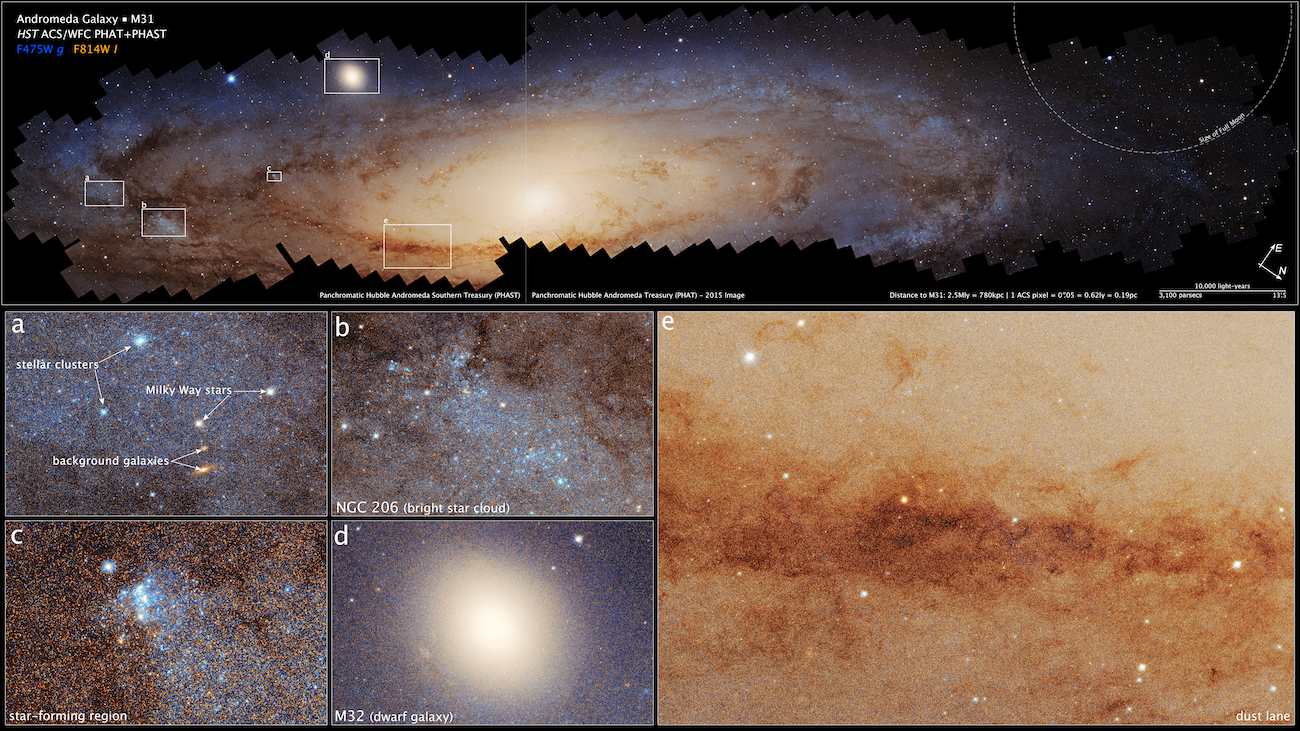

Ever since its launch in 1990, NASA’s Hubble Space Telescope has greatly informed our understanding of the universe, capturing images of planets in our own solar system and galaxies billions of light-years away. But it was only earlier this year that the telescope accomplished one of its most stunning feats of astrophotography: a 417-megapixel panorama of the Andromeda galaxy.
The Andromeda galaxy is among the closest to Earth, located 2.5 million light-years away from us. The galaxy is so close, in fact, that it can be seen with the naked eye on clear autumn nights, appearing as a “faint cigar-shaped object roughly the apparent angular diameter of our moon,” according to NASA. The Andromeda’s proximity, though, was precisely what made the task of photographing it so challenging.
“The galaxy is a much bigger target on the sky than the galaxies Hubble routinely observes, which are often billions of light-years away,” NASA’s Hubble Mission Team explained in a statement.
It’s not surprising, then, that the entire composition took over a decade and 1,000 Hubble orbits to complete. Stitching together more than 600 overlapping snapshots, the panorama serves as the largest photomosaic ever assembled from Hubble Space Telescope observations. Across its 2.5 billion pixels are a vast and vibrant assortment of 200 million stars, a mere fraction of Andromeda’s entire population. Taken in its entirety, the panorama is not only a technological or photographic achievement, it’s also a critical glimpse into the Andromeda galaxy itself.
As the Milk Way’s closest neighbor, Andromeda has historically functioned as a “proxy” for other spiral galaxies in the universe at large, whether it be with regards to their structure or their evolution.
“Without Andromeda as a proxy, astronomers would know much less about our own Milk Way,” NASA says. “That’s because we are embedded inside the Milky Way. This is like trying to understand the layout of New York City by standing in the middle of Central Park.”
Ben Williams, principal investigator at the University of Washington, echoed the sentiment: “With Hubble we can get into enormous detail about what’s happening on a holistic scale across the entire disk of the galaxy. You can’t do that with any other large galaxy.”
This recent panorama originally began with the Panchromatic Hubble Andromeda Treasury (PHAT) about 10 years ago, while images of Andromeda’s northern half were obtained at near-ultraviolet, visible, and near-infrared wavelengths using the Advanced Camera for Surveys and the Wide Field Camera 3 aboard Hubble. PHAT was followed up by the Panchromatic Hubble Andromeda Southern Treasury (PHAST), which resulted in additional images of approximately 100 million stars in Andromeda’s southern half. When combined, PHAT and PHAST collectively cover the entire disk of Andromeda.
“This detailed look at the resolved stars will help us piece together the galaxy’s past merger and interaction history,” Williams adds.
Per NASA, Hubble’s new findings will support future observations by the James Webb Space Telescope and the upcoming Nancy Grace Roman Space Telescope, which is “essentially a wide-angle version of Hubble” and will capture the “equivalent of at least 100 high-resolution Hubble images in a single exposure.”
To learn more about this extraordinary panorama of the Andromeda galaxy, visit NASA’s website.
Earlier this year, NASA released an incredible, 417-megapixel panorama of the Andromeda galaxy shot by the Hubble Space Telescope.
The vast panorama took over a decade to complete, and features 200 million stars.



















